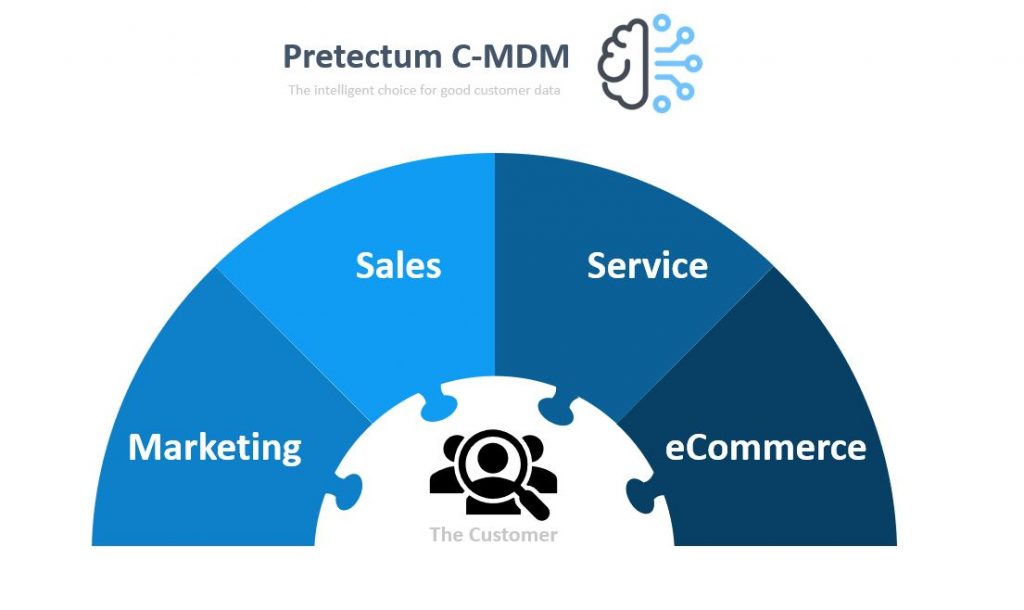Pew Research Center has been studying the Millennial generation for years but in 2018 decided there was a difference between Millennials and the next generation.
They decided to use 1996 as the last birth year for Millennials for their future work. Anyone born between 1981 and 1996 was considered a Millennial, and anyone born from 1997 onward is part of a new generation.
They hesitated at first to give this next generation a name but settled on Generation Z. In the interceding years, Gen Z has taken hold in popular culture and journalism. You will find it referenced in Merriam-Webster, Oxford, and Urban Dictionary as the generation that follows Millennials.
This is a generation with which you have an 8-second window to either perform or perish.
Sarwant Singh – Forbes
As cited in a 2019 article, “generational cutoff points aren’t an exact science. They should be viewed primarily as tools”, tools for analysis and classification of people, like your customers!
Why do we bring this up? Well, the answer is simple, Gen Z represents a significant customer market and they are a generation that has been raised on the internet and social media.
Most of them earn their own income and even if they haven’t quite flown the coop, their parents and family members likely support them financially with more robust purchasing power than prior generations of youth.
In China, for example, they have naturally become the main force that drives China’s consumer market.
As members of Gen Z take center stage in the consumer market, they are influencing the survivorship of brands and they aren’t necessarily going for the mainstream or traditional brands, and China, in particular, not even necessarily chasing global or foreign brands.
This represents a significant opportunity for newcomers, niche brands, and brands that choose to distinguish themselves from the rest of the pack.
“Broadly speaking, Gen Zers are ethnically diverse, socially aware, and environmentally conscious” according to Singh. Authenticity and transparency are key and they prefer direct autonomy and control in their decision-making as opposed to being ‘sold to’. This implies a general distrust of big established brands, and favor for brands that focus on the individual. Purchase decisions are therefore based on peer reviews, accessible product information, and ratings – decision potentially by consensus. Who has all that? Actually, the heritage brands do, they just need to keep the volume and velocity of good ratings up.
Where global brands sometimes fail
We have to acknowledge that tastes change over time, and with them, brand preferences. Just ten years ago, if you were considering the purchase of a Tesla car say, you would have raised some eyebrows, today, not so much.
The eyebrows would likely have been raised by those born in an era that was dominated by global brands like Ford, Volkswagen, Hyundai, Nissan, Toyota, GM, Mazda, and the like. Other brands like Mercedes-Benz, BMW, Porsche, Ferrari, Lamborghini, Bentley, and Rolls Royce would have been regarded as premium brands. You’ll find a lot of sentiment out there about these brands because many of them have been multi-generationally familiar to us.
An article in the SCMP suggests “Your choice between, say, an Audi Q7, a BMW X5, a Porsche Cayenne or a Mercedes GLE (now) becomes more a matter of your brand preference than of significant product differences. The choice of options and materials is pretty much the same.” Engines used to be a differentiator, for example, but that difference may be moot with all-electric engines, and though the heritage brands are late to the game, they may still have their brand and their history with the past customers as the ultimate trump card.
Studies undertaken in 2020 and 2021 by YPulse in North America according to Inc, noted that young people were already thinking differently about mobility for example. Gen Z’ers are looking at alternatives to ride-share and public transport in favor of their own rides. 3.4% no longer want to ride public transport and 56% say they want safer transportation, options that they obviously feel ridesharing and public transport don’t necessarily offer.
E&Ys 2020 Mobility Consumer Index found that 45% of all first-time car buyers are Millennials, another powerhouse group with dollars to spend. Intuitively, one would expect the more ‘environment woke’ Gen Z and Millennial consumers would be interested in only all-electric vehicles like those offered initially by just Tesla and a few others, the analysis doesn’t necessarily support this viewpoint though.
Based on market research performed by Hedges & Company in 2018, it turns out the average Tesla owner is a 54-year-old white man making over $140,000 with no children; so what would it take to change that demographic to more Millennials and Gen Z?
According to Inc, what matters to these generations is not the flashy features that get Boomers and Gen Xers excited. Ypulse found that the younger buyers are more interested in comfort, reliability, and fuel efficiency – in that order, facets that are offered perhaps by Tesla but which traditional brands offer too, at a lower or comparable price point. Remember too, that peer reviews get factored in too!
Keeping their product lines aligned with their heritage and yet still seeking to appeal to the potentially more environmentally conscious Gen Z it is interesting then, that a heritage brand like Ford has “gassed” its business up with new and compelling offerings in the hybrid and full EV spaces. They’ve recognized the need and played their brand advantage but they’ve done it with data to back up their position.
What this is demonstrative of, is a well-established brand responding relatively quickly and introducing horizontal differentiation within the brand vertical that Ford is. The F-150 Lightning for the utilitarian persona perhaps, the Mustang Mach-E for those looking for something with wholly visual and performance appeal, and the E-Transit for the commercial sector. Three distinctive models for likely entirely different markets.
It is suggested that the Gen Z consumer distinguishes themself from other generations by being perhaps more emotional in terms of needs. There’s an element of their outward appearance and overt visible behavior, combined with a need to be distinctive and unique in the face of a great deal of societal homogeneity.
It is perhaps that reason that singles out their relative disinterest in the Tesla brand. Theirs is a personalized aesthetic perhaps, and the older more established brands like Ford, GM, Nissan, and Toyota et al may actually have a better shot at servicing this aesthetic as a result of having offered personalized customization in the past, while at the same time being ecologically and environmentally responsible. It is also about availability. Do I buy something I can drive off the lot today or do I wait? Time will tell. There’s still a relative scarcity factor a long waitlist for Tesla and that doesn’t help.
So what made Ford, take the ambitious objective of all-electric engineering on at the time that it did? According to Forbes contributor Dale Buss, “Ford futurist”, Sheryl Connelly looked at a global survey of thousands of consumers and articulated in Looking Further with Ford Trends Report that off-planet travel for leisure and entertainment Gen Z; and disinterest in next generations of humanity characterized Gen Z. This is backed up by 81% of adults saying climate change is a worry for future generations and at least 40% of Canadian women, for example, cited as having concerns about climate change as a reason for not wanting to have children.
I read that as potentially a story that suggests previous generations have ruined the planet and we need to look for alternatives – something not dissimilar to the message in the apocalyptic black comedy film “Don’t Look Up“. It’s conceivable that Gen Z believes that there are well-progressed invisible plans to colonize other planets and not everyone knows or is “in” on those plans.
You can read more on Connelly’s opinion and discoveries here.
Now you might ask, what does this all have to do with Customer Master Data and MDM in particular? Pretectum’s view is that there’s actually quite a lot. Companies that embrace authenticity will find that Gen Z customers will be their best brand ambassadors. What better to demonstrate authenticity than to be environmentally and socially responsible and yet support uniqueness, individualization, and personalization.
Accommodating individual preferences was ironically the aspect of Henry Ford’s pushback with the Model T that he is well known for. “Any customer can have a car painted any color that he wants, so long as it is black.” The Model T only came in black because the production line required compromise so that efficiency and improved quality could be achieved; modern vehicle production doesn’t have to be so rigid, and in fact, make-to-order (MTO) is increasingly commonplace today even at Ford.
Ford’s goal is to have MTO factory orders account for upwards of a quarter of vehicle sales and consequently, they can reduce overall finished vehicle inventory in US dealerships from a historic average of 75 days to a targeted range of 50-to-60 days.
So, if your business is in automotive for example, you likely have a generation or in fact, multiple generations of buyers of your vehicles. If your customers have had a good past buying and driving experience, they may even have bought multiple vehicles from you.
Those Gen Z’ers that chase a Ford likely grew up in a household where a Ford was owned. There may even be a degree of unintentional brand loyalty among them. As an auto manufacturer, the chances are, you know who those past buyers were, but more importantly, if you’ve afforded them credit, insurance, warranty, extended warranty, and even service and support you know heaps about them from all that interaction.
To maintain those relationships with past customers, and to benefit from the data you have collected in the past you need to consider that you can harvest unique insight that newcomers cannot. You can start to leverage the adequacy of responses to surveys for example. You have to be engaged with those past and present customers and keep them interested in actually engaging with you again and one of the best ways is through personalized communications which are driven by detailed and appropriate customer master data. You can only really do that if the data is aligned with your business needs and the intentions that you have in mind for your outreach programs.
This is where Pretectum as a customer master data management platform provider (CMDM) can be of help. Contact us today to learn more about how you can improve your customer master data.




